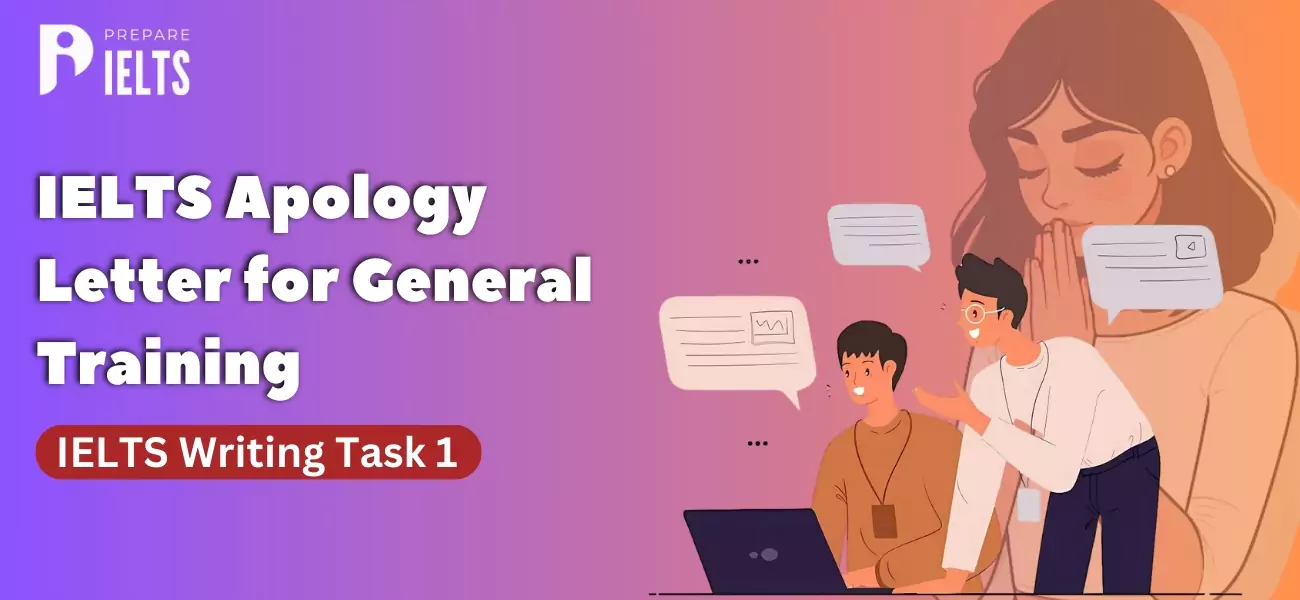
Overview
The IELTS Reading Answers for "The Origins of Laughter" are based on an academic reading passage with thirteen questions to answer in twenty minutes. If you practice a lot, you can get the maximum possible score on the IELTS Reading section. To achieve the highest points, you must be familiar with the various questions and how to answer them.
Solving and reviewing sample reading questions from previous IELTS tests is an effective strategy to prepare for the reading section of the test. This will measure your reading comprehension and familiarise you with the various question formats.
Let's see whether you can complete the academic section "The Origins of laughter" in 20 minutes and how easy it is for you.
The Origins of Laughter Passage
A. While joking and wit are uniquely human inventions, laughter certainly is not. Other creatures, including chimpanzees, gorillas and even rats, laugh. The fact that they laugh suggests that laughter has been around for a lot longer than we have.
B. There is no doubt that laughing typically involves groups of people. “Laughter evolved as a signal to others — it almost disappears when we are alone,” says Robert Provine, a neuroscientist at the University of Maryland. Provine found that most laughter comes as a polite reaction to everyday remarks such as “see you later” rather than anything particularly funny. And the way we laugh depends on the company we’re keeping. Men tend to laugh longer and harder when they are with other men, perhaps as a way of bonding. Women tend to laugh more and at a higher pitch when men are present, possibly indicating flirtation or even submission.
C. To find the origins of laughter, Provine believes we need to look at play. He points out that the masters of laughing are children, and nowhere is their talent more obvious than in the boisterous antics, and the original context is play. Well-known primate watchers, including Dian Fossey and Jane Goodall, have long argued that chimps laugh while at play. The sound they produce is known as a pant laugh. It seems obvious when you watch their behavior — they even have the same ticklish spots as we do. But after removing the context, the parallel between human laughter and a chimp’s characteristic pant laugh is not so clear. When Provine played a tape of the pant laughs to 119 of his students, for example, only two guessed correctly what it was.
Also read: Types of IELTS Exam 2024 – Interesting Facts about IELTS Exam
D. These findings underline how chimp and human laughter vary. When we laugh, the sound is usually produced by chopping up a single exhalation into a series of shorter ones, with one sound produced on each inward and outward breath. The question is: does this pant laughter have the same source as our own laughter? New research lends weight to the idea that it does. The findings come from Elke Zimmerman, head of the Institute for Zoology in Germany, who compared the sounds made by babies and chimpanzees in response to tickling during the first year of their life. Using sound spectrographs to reveal the pitch and intensity of vocalisations, she discovered that chimp and human baby laughter follow broadly the same pattern. Zimmerman believes the closeness of baby laughter to chimp laughter supports the idea that laughter was around long before humans arrived on the scene. What started simply as a modification of breathing associated with enjoyable and playful interactions has acquired a symbolic meaning as an indicator of pleasure.
E. Pinpointing when laughter developed is another matter. Humans and chimps share a common ancestor that lived perhaps 8 million years ago, but animals might have been laughing long before that. More distantly related primates, including gorillas, laugh, and anecdotal evidence suggests that other social mammals can do too. Scientists are currently testing such stories with a comparative analysis of just how common laughter is among animals. So far, though, the most compelling evidence for laughter beyond primates comes from research done by Jaak Panksepp from Bowling Green State University, Ohio, into the ultrasonic chirps produced by rats during play and in response to tickling.
F. All this still doesn’t answer the question of why we laugh at all. One idea is that laughter and tickling originated as a way of sealing the relationship between mother and child. Another is that the reflex response to tickling is protective, alerting us to the presence of crawling creatures that might harm us or compelling us to defend the parts of our bodies that are most vulnerable in hand-to-hand combat. But the idea that has gained the most popularity in recent years is that laughter in response to tickling is a way for two individuals to signal and test their trust in one another. This hypothesis starts from the observation that although a little tickle can be enjoyable, it can be torture if it goes on too long. By engaging in a about of tickling, we put ourselves at the mercy of another individual, and laughing is what makes it a reliable signal of trust, according to Tom Flamson, a laughter researcher at the University of California, Los Angeles. “Even in rats, laughter, tickle, play and trust are linked. Rats chirp a lot when they play,” says Flamson. “These chirps can be aroused by tickling. And they get bonded to us as a result, which certainly seems like a show of trust.”
G. We’ll never know which animal laughed the first laugh or why. But we can be sure it wasn’t in response to a prehistoric joke. The funny thing is that while the origins of laughter are probably quite serious, we owe human laughter and language-based humour to the same unique skill. While other animals pant, we alone can control our breath well enough to produce the sound of laughter. Without that control, there would also be no speech — and no jokes to endure.
The Origins of Laughter - Questions and Answers
Questions 1 to 6:
Look at the following research findings and the list of people below.
Match each finding with the correct person, A, B, C or D.
Write the correct letter, A, B, C or D, in boxes 1-6 on your answer sheet.
NB You may use any letter more than once.
Q1. Babies and some animals produce laughter, which sounds similar.
Q2. Primates are not the only animals who produce laughter.
Q3. Laughter can be used to show that we feel safe and secure with others.
Q4. Most human laughter is not a response to a humorous situation.
Q5. Animal laughter evolved before human laughter.
Q6. Laughter is a social activity.
List of people
A Provine
B Zimmerman
C Panksepp
D Flamson
Ans1: B
Ans2: C
Ans3: D
Ans4: A
Ans5: B
Ans6: A
Question 7 - 10
Complete the summary using the list of words, A-K, below.
Write the correct letter, A-K, in boxes 7-10 on your answer sheet.
Some scientists believe that laughter first developed out of 7 _______. Research has revealed that human and chimp laughter may have the same 8 _______. Scientists have long been aware that 9 _______ laugh, but it now appears that laughter might be more widespread than once thought. Although the reasons why humans started to laugh are still unknown, it seems that laughter may result from the 10 _______ we feel with another person.
A combat
B chirps
C pitch
D origins
E play
F rats
G primates
H confidence
I fear
J babies
K tickling
Ans7: E
Ans8: D
Ans9: G
Ans10: H
Question: 11-13
Do the following statements agree with the information given in Reading Passage 1?
In boxes 11-13 on your answer sheet, write
TRUE: if the statement agrees with the information
FALSE: if the statement contradicts the information
NOT GIVEN: if there is no information on this
Q11: Both men and women laugh more when they are with members of the same sex.
Q12: Primates lack sufficient breath control to be able to produce laughs the way humans do.
Q13: Chimpanzees produce laughter in a wider range of situations than rats do.
Ans11: NOT GIVEN
Ans12: TRUE
Ans13: NOT GIVEN
Also Check: Required IELTS Score For UK
Register Now, for a free Mock test - Join Today!
Conclusion
Carefully reading the passage and paying attention to the true meaning of the words and sentences will help you in detecting the correct answer to the questions. Before reading the passage, students are advised to go through the questions once quickly.
If you want to get further details on how to prepare for IELTS or, particularly, the IELTS Reading section, you can contact the Prepare IELTS exam (PI) expert counsellors for additional guidance. Our team of education experts is dedicated to providing you with the best test material and guidance to ace the IELTS exam. You can get a one-on-one counselling session and an IELTS online practice test via our platform. Contact us at info@prepareieltsexam.com or call us at +91 9773398388 for further queries.
FAQs
Your reading comprehension abilities are assessed using a variety of reading techniques, such as scanning, detailed reading, and skimming. The Academic Reading test is divided into three portions, each of which has a lengthy passage drawn from a contemporary book, journal, magazine, or newspaper.
There are three sections in the format of the IELTS Academic Reading Test. You will encounter a variety of passage kinds during your preparation, including narrative, descriptive, and argumentative ones. If there are any technical terms in the passage, a basic glossary is included.
You can improve your reading skills for the IELTS exam by practising different kinds of reading passages. Also, it is important to learn the correct pronunciation of the difficult words.
Latest Blogs
-

IELTS Score for Canada: Minimum IELTS Requirement for Canada 2025
2024-09-27 18:24:14
-

IELTS Apology Letter for General Training: IELTS Writing Task 1
2024-09-25 16:38:03
-

Minimum IELTS Score for Australia: Student Visas, Universities, and PR in Australia
2024-09-23 18:09:51
-

Common IELTS Speaking Topics with Answers
2024-09-20 18:21:56
-

Describe a foreign culture that you like: IELTS speaking cue card
2024-09-18 16:14:11
-

Describe a Rainy Day IELTS Speaking cue card
2024-09-18 11:11:32
-

Describe a new law you would like to introduce in your country IELTS cue card
2024-09-13 17:17:46
-

Describe your favourite weather: IELTS cue card
2024-09-11 18:01:28
-

Describe an enjoyable journey by public transport: IELTS cue card
2024-09-09 18:05:45
-

Step-by-Step Guide to IELTS Registration in India for the Year 2024 & 2025
2024-09-07 12:59:51


